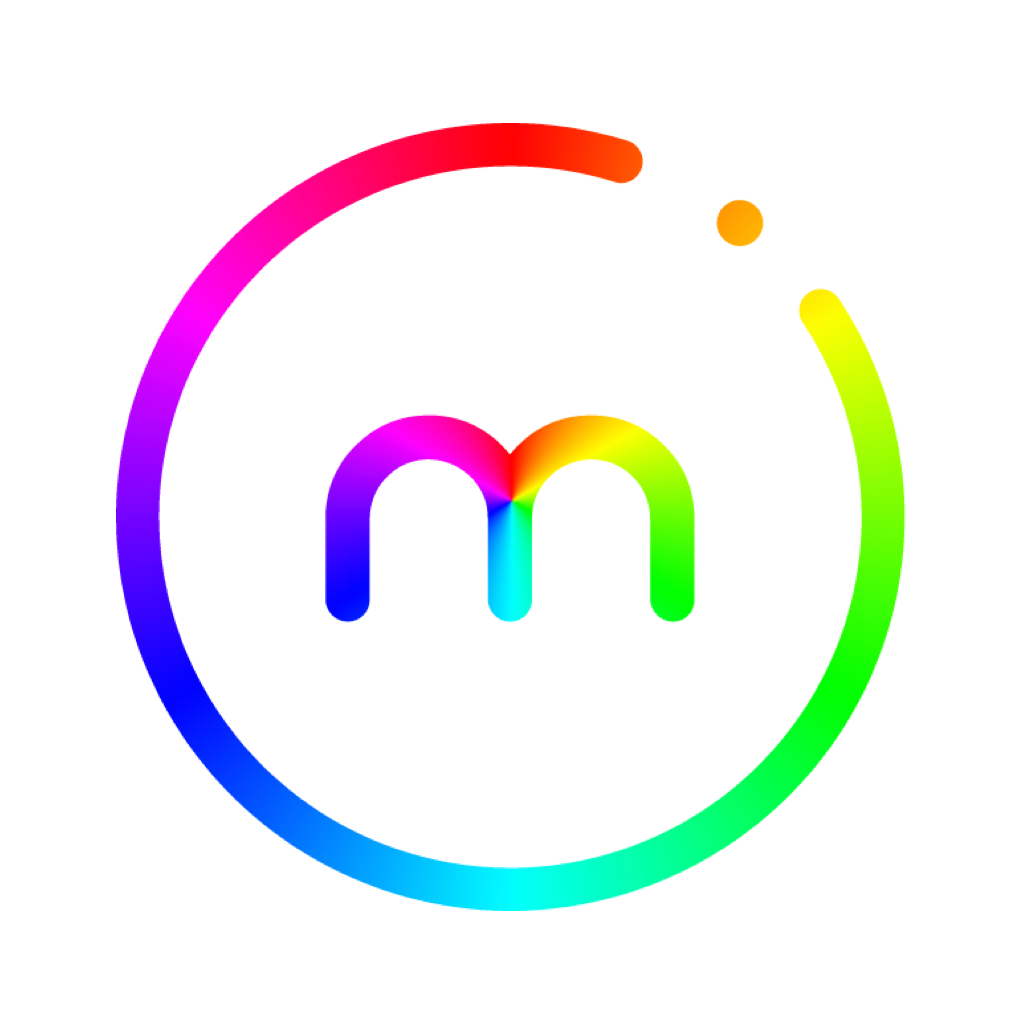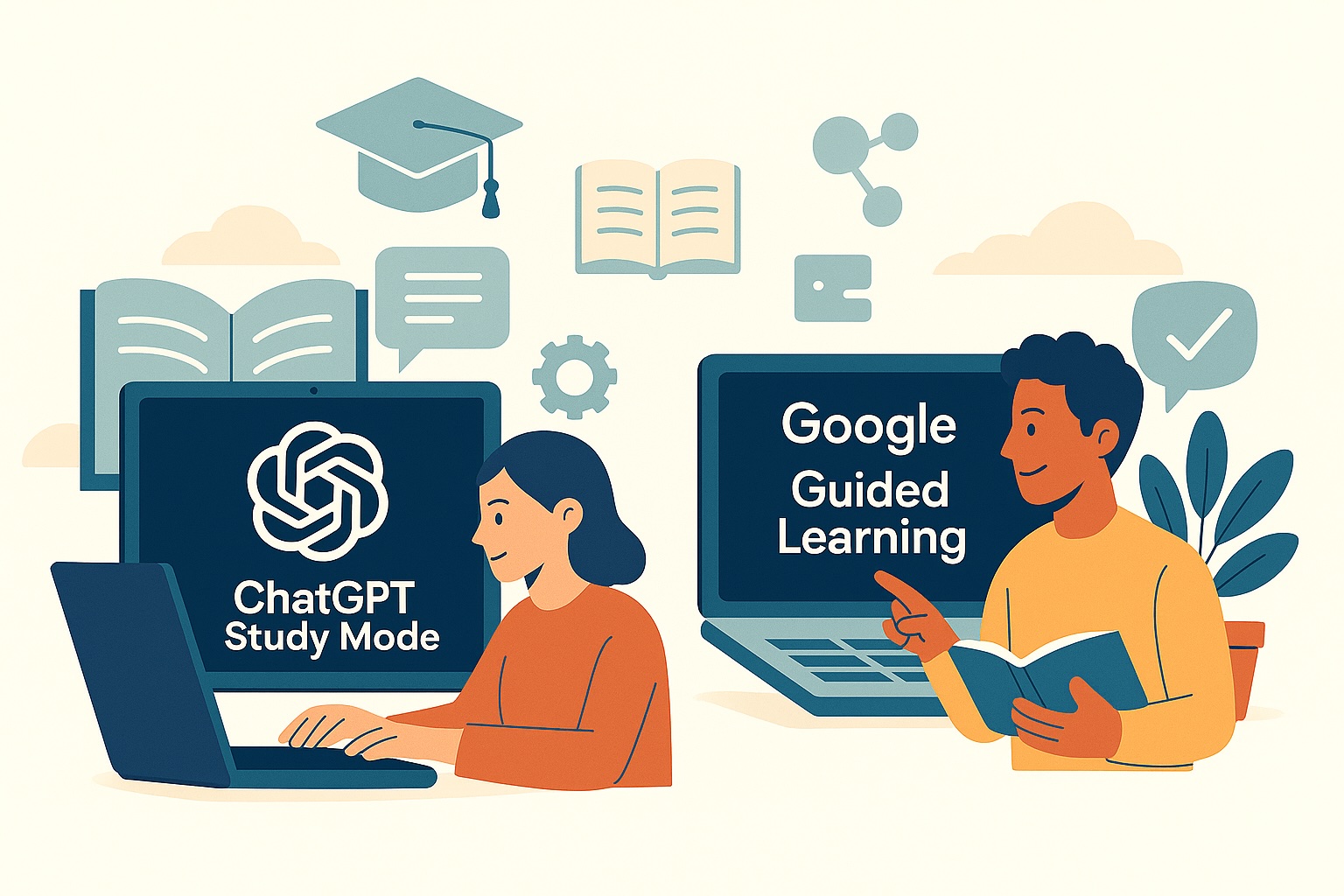With the rapid advancement of artificial intelligence (AI) in education, tech giants OpenAI and Google have launched learning-focused features designed to help learners deepen their knowledge and take a more active role in the learning process. These are ChatGPT’s Study Mode (OpenAI) and Guided Learning in Gemini (Google). This article provides a detailed look at both platforms, compares their strengths and weaknesses, and shares real user experiences.
1. Overview
1.1 ChatGPT Study Mode (OpenAI)
Study Mode is a new feature released by OpenAI in late July 2025, designed to shift ChatGPT from being merely an “answer machine” to becoming a “learning companion and guide,” encouraging learners to interact rather than simply receive answers.
You can activate Study Mode by selecting “Tools” → “Study and learn” in ChatGPT on iOS, Android, web, or desktop. In this mode, ChatGPT asks about your learning goals and current level, then guides you through solving problems. It’s available on Free, Plus, Pro, and Teams plans, and will soon be added to ChatGPT Edu.
Study Mode is built on custom system instructions developed in collaboration with education and learning science experts. OpenAI is gathering feedback from students and plans deeper integration in future models.
Key features:
- Does not give direct answers; instead, it uses a Socratic method of asking guiding questions for interactive engagement.
- Supports creating flashcards, quizzes, summaries, test suggestions, and practice questions — tailored to the learner’s preferred study style.
- Can remember and adapt based on documents uploaded by the user, maintaining continuity between study sessions.
1.2 Google Gemini Guided Learning
Guided Learning is a new learning mode in Google’s Gemini platform, launched just days after ChatGPT’s Study Mode. It is also a personal learning assistant, but distinguishes itself through the LearnLM learning model, trained with educational research.
In this mode, Gemini doesn’t just answer questions — it asks thought-provoking questions, breaks down problems step-by-step, and uses images, diagrams, videos, and interactive quizzes to help users truly understand concepts rather than just find quick answers.
Google developed Guided Learning in collaboration with educators, cognitive scientists, and learning experts to align with evidence-based learning principles. LearnLM is integrated into Gemini 2.5 Pro and has been highly rated by education professionals.
Additionally, Google offers a free 12-month AI Pro Plan for students in certain countries, including the US, Japan, Indonesia, South Korea, and Brazil, if they register before October 6, 2025.
2. Side-by-Side Comparison

| Criteria | ChatGPT Study Mode | Google Gemini Guided Learning |
|---|---|---|
| Approach | Interactive questioning and feedback based on learning goals and level | Step-by-step support with a mix of questioning, visuals, and quizzes |
| Learning modalities | Text-based; supports flashcards, quizzes, summaries, user-provided documents | Text + images + videos + diagrams + interactive quizzes |
| Content source | Internal guided-instruction system; improved via user feedback | LearnLM – a specialized AI learning model trained on learning science |
| Personalization | Memory and customization from user-uploaded documents | Context-based personalization with visual aids and guided Q&A |
| Availability | Free, Plus, Pro, Teams (coming soon to Edu) | Free AI Pro Plan for students in certain countries; integrates with Classroom |
| Primary goal | Encourage active thinking, reduce “answer dumping” | Build deep understanding through multimodal, exploratory learning |
| Unique value | Ideal for university students needing interactive review | Rich, creative learning experience; easy classroom and self-study integration |
3. Feedback and Real-World Reviews
3.1 ChatGPT Study Mode
- Tom’s Guide: After testing 7 prompts, Study Mode was praised for explaining concepts simply, adapting to different study styles, generating flashcards, test ideas, and practice exercises — overall, a strong interactive tutor. Limitation: lacks built-in scheduling and is weaker in creative fields.
- TechLearning / Wired / PCWorld: Positive reviews, noting it “feels more like a tutor than a machine,” especially effective for STEM subjects like quantum mechanics. Still, it can be tricked into completing assignments for students.
- Reddit: “Study Mode checks in along the way so you actually have time to process… Great for retaining information.”
- MIT Tech Review: Warns that, despite strong interactive guidance, the model still relies on broad data sources that may contain errors — users should verify information.
- Educator & student surveys: Generally seen as a “helpful tool” that aids creativity, summarization, and research, though accuracy remains a concern.
3.2 Google Gemini Guided Learning
- TechCrunch / The Verge / Times of India / Lifewire: Highlights the goal of helping students understand concepts step-by-step, using visuals, videos, and interactive quizzes. Built with input from education experts, focusing on active learning over quick answers.
- Digit.IN: Describes Guided Learning as a “visual instructor” delivering structured modules: definitions, diagrams, real-life examples.
- Reddit: “Guided Learning breaks down problems step-by-step… helps you uncover the ‘how’ and ‘why’… automatically integrating images, diagrams, and YouTube videos.”
- Education support: Google backs Guided Learning with free AI Pro Plans, a $1B investment in education and AI, and Gemini for Education with LearnLM — optimized for evidence-based learning principles. Teachers can easily integrate these tools into Google Classroom.
4. Summary and Evaluation
4.1 Key Strengths
- ChatGPT Study Mode: A powerful tool for active, personalized learning that adapts to individual goals. Leverages the Socratic method, supports flashcards, and maintains knowledge continuity. Particularly well-suited for university students seeking deeper understanding.
- Google Guided Learning: Offers a rich, multimodal learning experience with clear lesson structures, suitable for both self-study and classroom integration.
4.2 Notable Limitations
- ChatGPT: Risk of misuse (students having AI complete assignments), and potential inaccuracies from broad data sources. Requires careful verification and ethical usage.
- Guided Learning: While multimedia-rich, it depends on Gemini’s content library, so accuracy and curriculum alignment still require review.
5. Conclusion
Both platforms aim to transform AI from a simple Q&A tool into a true learning partner. ChatGPT Study Mode delivers deep, personalized, flexible engagement, while Google Gemini’s Guided Learning excels at visualization, structured lessons, and classroom integration.
In short:
- If you prefer step-by-step guidance with interactive questioning → Study Mode is a strong fit.
- If you want rich multimedia, creative learning, and classroom-ready content → Guided Learning is the better choice.
Both are rooted in educational research and user feedback, with the potential to reshape teaching and learning in the AI era.


Leave a Reply